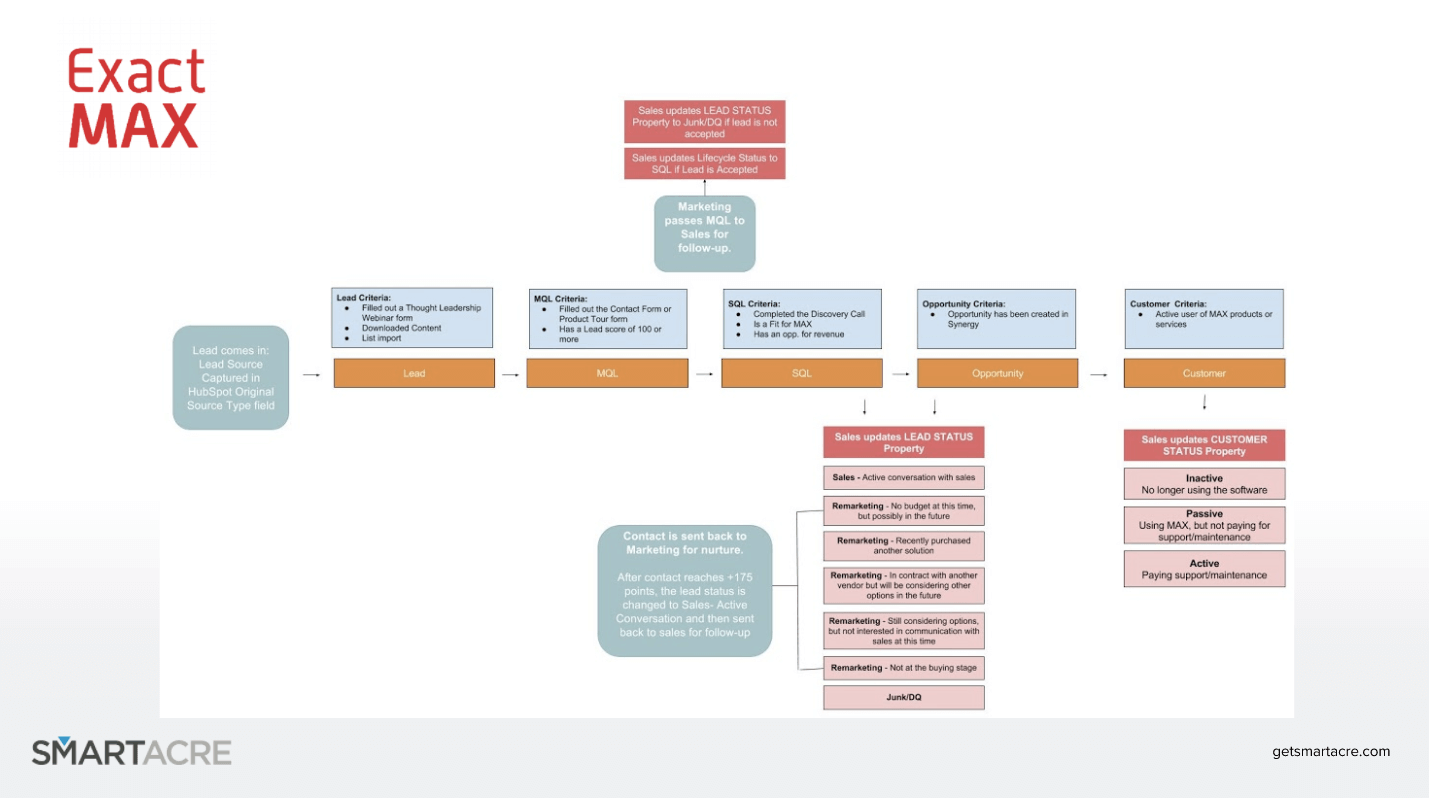HubSpot Helps MAX Win Big: How Lead Attribution & Automation is the Future of Client Enablement
The ‘future’ promises many things. Flying cars for one — plus, technology that does a lot of hard work for us. While we’re still waiting on the cars, the modern marketer is blessed with some incredibly helpful tools. The challenge we often see as an agency, however, is this powerful technology not being used to its full potential. While the initial setup can be a bit daunting, the long-term benefits of automating sales and marketing processes are substantial and, ultimately, rewarding.
A bit about MAX ERP software:
When MAX first partnered with SmartAcre® in April 2016, they were looking for great ways to promote their ERP services and improve their marketing and sales practices with the help of HubSpot.
MAX is an ERP (Enterprise Resource Planning) software solution that helps small to medium sized manufacturers manage inventory, increase efficiency, and maintain compliance. With over 20 years of experience in the marketplace and thousands of successful implementations in North American manufacturing facilities, MAX helps growing manufacturers control their resources with an easy-to-use solution that solves pressing issues across the entire business.
The challenge MAX faced:
After more than a year of successfully capturing leads, MAX’s marketing dashboard told a different story — it displayed zero Sales Qualified Leads (SQLs), at least from the information that was available to SmartAcre.
The disconnect wasn’t in the data, it was in the reporting. Initially, MAX used an internal CRM that was not integrated with HubSpot, making it challenging for marketing to track leads through to deals closed/won. Specifically, when sales determined a lead wasn’t ready to convert, they changed its lead status to “Remarketing”, sending the lead back into the marketing queue for further nurturing or qualification. But then what? Potentially re-qualified leads sat in ‘lead limbo’, not being contacted again by sales unless they were successfully monitored by the MAX marketing team and manually deemed an SQL. This painstakingly hands-on process required too much time and analysis, and — as a result — led to missed marketing and sales opportunities.
In 2017, the MAX sales team started using HubSpot Sales, which opened doors for improved automation, reporting and nurturing. However, there was still one lingering problem — Marketing still needed to define lead stages and attribute activity manually so sales could recognize the appropriate next steps.
Our strategy? Clearly identify, define, and track HubSpot Lifecycle Stages:
After learning the full story from MAX, we concluded that the best solution was to automate and clearly designate lead status based on agreed upon definitions. This was outlined in three simple steps:
- First, determine each lead’s appropriate lead stage; then,
- Add up each lead’s individual lifecycle conversions; so that,
- Quality leads are successfully routed to the sales team — automatically.
In addition, we recommended evaluating an individual’s journey using the following attribution models:
- First Touch: Gives credit to the marketing channel that drove a visitor to MAX’s website for the first time.
- Lead Conversion: The first action where the prospect/visitor became a lead usually by completing a form.
- Opportunity Creation: The last action before a lead is converted to an opportunity.
- Customer Close: The last action or marketing campaign that assisted sales in the conversion of an opportunity to a customer.
One thing we kept in mind; each attribution model provides a different story of a campaign’s performance. We started with First Touch as the primary attribution model and then progressed to a more robust model as the data and analytics became more sophisticated.
How we implemented the solution:
To set this process in motion, a Lifecycle Stage Workflow was built to alleviate the extra manual work from MAX’s marketing team. The workflow uses lead status and lead scoring to trigger automatic alerts for the sales team.
This process also included specific lead attribution models, using UTM parameters to track first and last touch instances. These tracking codes were appended to different marketing campaigns, eBook launches, paid advertisements, social media content, etc. to ensure that leads received the appropriate number of points associated with their engagement behavior.
To better help the MAX sales and marketing team understand how the workflow and HubSpot properties automate and simplify the lead management process, we shared this flow chart (as seen below):
By implementing HubSpot lead scoring, MAX now uses behavioral actions to convert leads into MQLs. For instance, a lead might not complete a contact form, but be active and engaged with multiple pieces of content. This interest can demonstrate that a lead is ready for sales interaction. Ultimately, this process provides the sales team with better leads that are closer to making a purchase decision.
Our results:
The biggest impact is that the new process allows MAX to set a monthly target for each lead stage, creating more accountability across teams and allowing the entire organization to analyze the success of the marketing-to-sales funnel. This allows MAX to better nurture and re-engage leads so people do not sit in a lifecycle stage and slowly burn out.
Client appreciation:
MAX’s small, but mighty marketing team was happy to give up the task of manually monitoring Long Term Nurture Leads. By automating the process with HubSpot, they discovered additional potential conversions and another valuable asset — time. Now, the MAX marketing team can focus on higher level tactics and execution and is looking forward to using more and more features of HubSpot in their bright future.

